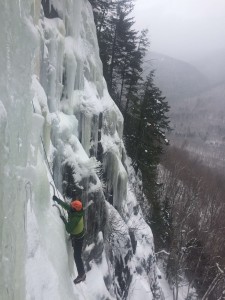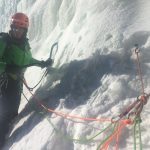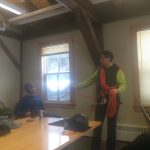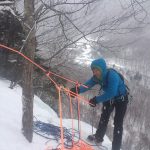Max Lurie, Recipient of the 2015 Gore-Tex Scholarship
2015_IIC_MaxLurie_Gore-Tex from Max Lurie on Vimeo.
As someone for whom alpinism is, by far, the preferred discipline of climbing, I am very grateful to have recently experienced the American Mountain Guides Association’s (AMGA) Ice Instructor Course (IIC). I am also scheduled to attend the Alpine Guide Course (AGC) this coming fall. Thanks to receiving scholarship funding from Gore-Tex, I spent five days climbing with and gleaned valuable feedback from the AMGA instructor team. We practiced rope techniques specific to ice climbing and winter hazards. We developed a keen eye for terrain and how to manage it efficiently, always thinking three moves ahead. And we discussed and practiced different methods of client care utilizing both hard and soft skill sets. This course has definitely increased my confidence, proficiency, and enjoyment of guiding ice climbing in the Northeast.
This IIC, in addition to the AGC, serves as an excellent foundation for guiding in the cold, snowy, icy, and variable terrain of New England. New Hampshire, where I guide for International Mountain Climbing School, is famous for hard, technical ice climbing. For someone always eager to learn new methodologies and practices, these two courses are invaluable links in the alpine-course curriculum.
The AMGA instructor team is comprised of veteran guides whose collective experiences total more than a century of professional guiding. A crucial and strong theme throughout the IIC was that of a guide’s security and risk vs. reward decisions—a pertinent topic given the several tragic accidents during the 2013–2015 seasons. Additionally, discussions on risk and hazard mitigation stressed the importance of “why you do it” not “what you do,” and incorporated crucial concepts like expanding your toolbox and using specific skills for specific reasons.
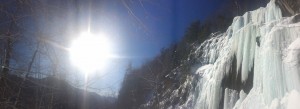
Art Mooney making it look easy on the steep Chia Direct (WI 4+), Frankenstein Cliff, NH. Photo: Max Lurie
Although potentially controversial, politics and topics of policies often came up during the packed schedule of the IIC. This is not surprising, since the direction of the AMGA is important for the development of guiding in the United States over the next 15 to 20 years, and beyond. During morning and afternoon guides’ meetings scheduled to discuss and debrief, we gained historical perspectives that felt almost as valuable as the hard skills we were taught throughout the course.
The US guiding profession, relatively young compared to that of Europe, is currently experiencing growing pains. In order to be taken seriously, we need to present ourselves as a cohesive professional group. All of us, including the AMGA, must uphold an agreed-upon standard much like every other respected profession in America. The AMGA’s ability to demonstrate itself as a unified association with a cohesive voice is crucial in order to continue effectively advocating for guides in the field.
I would like to add that the availability of scholarships from partners with the AMGA, such as Gore-Tex, has been a vital resource for me and others. Throughout the guide-track process, expenses including tuition, travel, and time taken off from work have made me appreciate, even more, the necessity of scholarship funding. Acknowledgment of this support is not only for myself, but also for other dedicated individuals pursuing this professional guiding curriculum.


